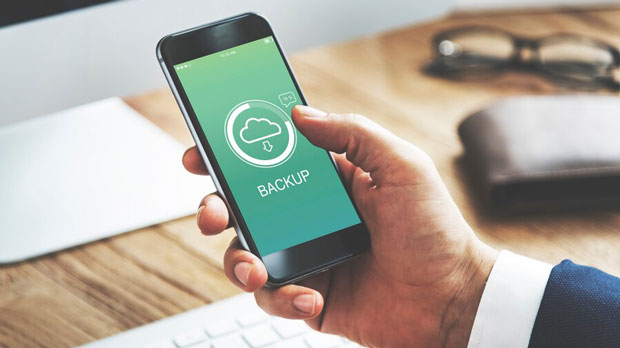In today’s digital landscape, security has become a primary concern for businesses and individuals alike. HTTPS has emerged as the standard protocol for secure communications over the internet, providing encryption for data transmission. A proxy, often used to enhance privacy and security, can also play a significant role in this process. When HTTPS is used with a proxy, understanding its encryption performance becomes essential. The interaction between proxies and HTTPS affects the overall security, speed, and functionality of data exchanges. In this article, we will explore the encryption performance of proxies in HTTPS mode, focusing on how they handle encryption, the challenges involved, and the benefits they offer. What is HTTPS and How Does it Work?HTTPS (Hypertext Transfer Protocol Secure) is a protocol used for secure communication over a computer network, most commonly the internet. It ensures that data transmitted between the client (e.g., a browser) and the server is encrypted, providing confidentiality, data integrity, and authenticity. HTTPS achieves this by using encryption protocols like SSL (Secure Socket Layer) or its more modern version, TLS (Transport Layer Security).When a user accesses a website via HTTPS, the communication between their browser and the server is encrypted, making it difficult for third parties to intercept or manipulate the data. The encryption process is crucial for protecting sensitive information, such as login credentials, payment details, and personal data.What is a Proxy and How Does It Work?A proxy server is an intermediary that sits between a client and the destination server. It handles requests from the client and forwards them to the server, and then sends the server’s response back to the client. Proxies are commonly used for a variety of reasons, including privacy enhancement, content filtering, and bypassing geographic restrictions.In the context of HTTPS, a proxy server can forward encrypted traffic. However, the encryption performance may be affected depending on how the proxy is configured. Some proxies may merely pass the encrypted data through, while others might decrypt the traffic, inspect it for security reasons, and re-encrypt it before sending it to the destination server.Encryption Performance of Proxies in HTTPS ModeThe encryption performance of proxies in HTTPS mode is influenced by several factors, including the type of proxy used, the encryption methods employed, and the level of security implemented. Below are the key aspects that determine the encryption performance:1. Type of Proxy ServerThere are various types of proxy servers, and their encryption performance in HTTPS mode differs. Two main categories of proxies are relevant here:1. Transparent Proxies: These proxies do not alter the encrypted data. They simply forward the encrypted packets between the client and the server. Since the data remains encrypted throughout the process, these proxies do not interfere with the encryption itself. This is generally considered the most secure configuration for proxy usage in HTTPS mode.2. Intercepting (or Man-in-the-Middle) Proxies: These proxies decrypt the encrypted HTTPS traffic, inspect it, and then re-encrypt it before forwarding it to the destination server. While this allows for detailed traffic inspection (such as malware detection or content filtering), it introduces potential security risks. The proxy’s decryption and re-encryption processes can weaken the encryption performance if the proxy is not properly configured or lacks sufficient processing power.2. Encryption ProtocolsThe strength of encryption in HTTPS is determined by the protocols used, such as SSL and TLS. TLS is more secure than SSL and is the preferred protocol in modern systems. When a proxy is involved, it must support the encryption protocols used by the client and the server. If a proxy does not support the latest encryption standards, it can cause vulnerabilities or slow down the encryption process.Additionally, some proxies may force a downgrade in encryption strength as a means to improve performance. This is known as a "protocol downgrade attack" and can leave sensitive data exposed. Therefore, it’s critical for proxies to support the latest versions of TLS to maintain strong encryption.3. Proxy Load and PerformanceThe encryption performance of a proxy is also affected by its load and processing power. Decrypting and re-encrypting traffic requires significant computational resources. If a proxy server is under heavy load, it may experience delays in processing encrypted data, leading to slower connections. This can be particularly problematic when dealing with high-volume traffic or when the proxy is handling multiple HTTPS connections simultaneously.To mitigate this, proxy servers may offload encryption tasks to dedicated hardware or employ optimizations to ensure that performance remains high even during peak usage times.4. Security ConsiderationsThe security of HTTPS traffic can be compromised if the proxy is not properly configured. For instance, if the proxy uses weak encryption algorithms or does not handle encryption keys securely, the traffic may be exposed to attacks. Additionally, if the proxy is compromised, attackers could potentially access the decrypted data.It’s important for businesses and organizations to ensure that any proxy used with HTTPS is configured with strong encryption protocols, proper key management, and additional security measures such as certificate pinning. This helps to prevent unauthorized access to sensitive data and maintain the integrity of encrypted communications.5. Privacy and AnonymityWhen using a proxy server, there is always a trade-off between privacy and performance. Transparent proxies do not affect encryption directly, but they may still log user data, which could be a concern for privacy-conscious individuals. On the other hand, intercepting proxies can potentially expose sensitive data to the proxy server itself, raising privacy concerns.For users and businesses looking to protect their privacy, it’s essential to choose a proxy provider that respects data confidentiality and has strong security measures in place to protect against eavesdropping.Benefits of Using a Proxy with HTTPSDespite the potential challenges, using a proxy in HTTPS mode offers several benefits:1. Enhanced Privacy: Proxies can mask the client’s IP address, adding an extra layer of privacy and making it harder for third parties to track online activity. 2. Security Benefits: Proxies can act as a barrier between the client and the internet, preventing direct access to the client’s data. This can reduce the risk of attacks such as Distributed Denial of Service (DDoS) or man-in-the-middle attacks.3. Access Control and Content Filtering: Proxies allow businesses to filter web content and restrict access to certain websites, helping maintain security policies.4. Improved Performance: Certain proxies can cache content, reducing the need to fetch the same data repeatedly from the server, improving load times and overall efficiency.The encryption performance of a proxy in HTTPS mode is influenced by various factors, including the type of proxy, the encryption protocols used, the load on the proxy server, and the overall security measures in place. Transparent proxies offer a more secure and efficient option for handling encrypted traffic, while intercepting proxies can offer added functionality but may also introduce security risks if not properly configured.Businesses and individuals must carefully evaluate the encryption performance of proxies when using HTTPS to ensure that both security and performance are optimized. By choosing the right proxy and ensuring it is properly configured, users can benefit from enhanced privacy, security, and efficiency while maintaining strong encryption for their online communications.
Jun 18, 2025



































































